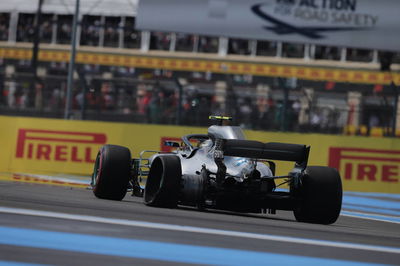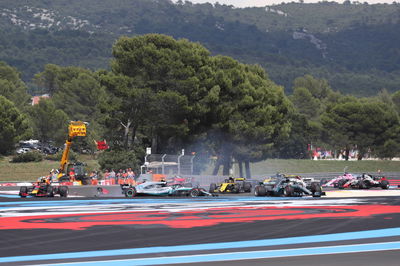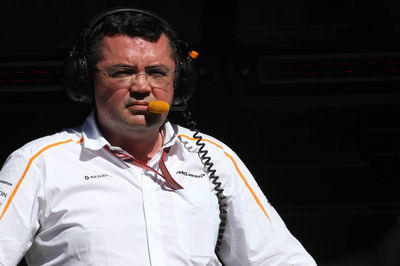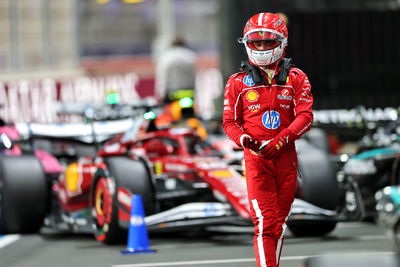Mercedes: Bottas lost five percent downforce in France
Valtteri Bottas lost around five percent downforce from his Formula 1 car during the French Grand Prix, data collated by Mercedes has revealed.
Bottas was pitched into a spin after being hit by Sebastian Vettel’s Ferrari at Turn 1 on the opening lap at Paul Ricard, leaving him to limp back to the pits with a punctured rear-left tyre.

Valtteri Bottas lost around five percent downforce from his Formula 1 car during the French Grand Prix, data collated by Mercedes has revealed.
Bottas was pitched into a spin after being hit by Sebastian Vettel’s Ferrari at Turn 1 on the opening lap at Paul Ricard, leaving him to limp back to the pits with a punctured rear-left tyre.
The Finn suffered further damage to his floor as he spent a full lap fighting to get his F1 car back to the pits, which in turn hampered his efforts of pulling off a recovery drive that ultimately culminated in an seventh place finish.
“The simple answer is about five percent [downforce],” Mercedes trackside engineering Andrew Shovlin said in Mercedes’ post-race debrief video. “That wasn’t from the contact with Vettel, it was actually when the tyre fails, when it punctures, it starts to fall apart and it’s the tyre hitting the floor that does the damage on the way back.
“So, you are trying to drive it slow enough that you don’t damage the floor too much but equally quick enough that you can get back on the train when the Safety Car restarts.
“Now, the problem was the floor damage wasn’t just bits that were knocked off but bits that were moving around. That’s why it’s a bit more complicated, because in certain corners you lose more or less performance.
“Valtteri’s big issue was not just the loss of downforce but how unpredictable it was,” Shovlin added. “Some corners it was OK and some laps it was OK but other times it would catch him out and he’d feel a big loss of rear grip, and that would lead to instability.”
According to Shovlin, Mercedes initially projected that Bottas would be able to fight his way into the top six, though a late Virtual Safety Car period hindered his progress.

“You don’t know how much damage has been done so you don’t know how fast the car is going to be,” Shovlin explained. “We fitted the soft tyre and the instruction to him was to fight through the field, that was more important than getting the true to the end at that stage.
"What we saw is that he could close on the midfield, and they all had to make a stop. So relatively early on we are looking for a position at the back of the top six. We didn’t quite make that in the end but there were points where that looked like a very realistic objective.”
Shovlin explained Mercedes decision to switch Bottas onto a two-stop strategy was to avoid the risk of suffering a complete tyre failure - similar to the one that ended Lance Stroll’s race - due to the excessive tyre wear he had encountered.
“There were two reasons really. With the car handling he was struggling a lot, he’d flat spotted the front tyres and we were getting a bit of vibration,” he said. “[We] saw what happened with Stroll where if you run that vibration too long it can actually damage the carcass of the tyre and eventually could lead to a failure.”
“The other issue was the rear tyres were not in good shape. The damage at the back of the car was causing a loss of grip. That was causing sliding and we were starting to get quite low on rear rubber, so it was a mix of factors.”
Mercedes boss Toto Wolff hopes Bottas’ run of misfortune will come to an end at this weekend’s Austrian Grand Prix.
“We know that we will once again get every detail right if we want a chance to win the race and, in Valtteri's case in particular, he needs luck to go his way a little more than we have seen in recent races, because he hasn't had the results that his performances should have earned.”












